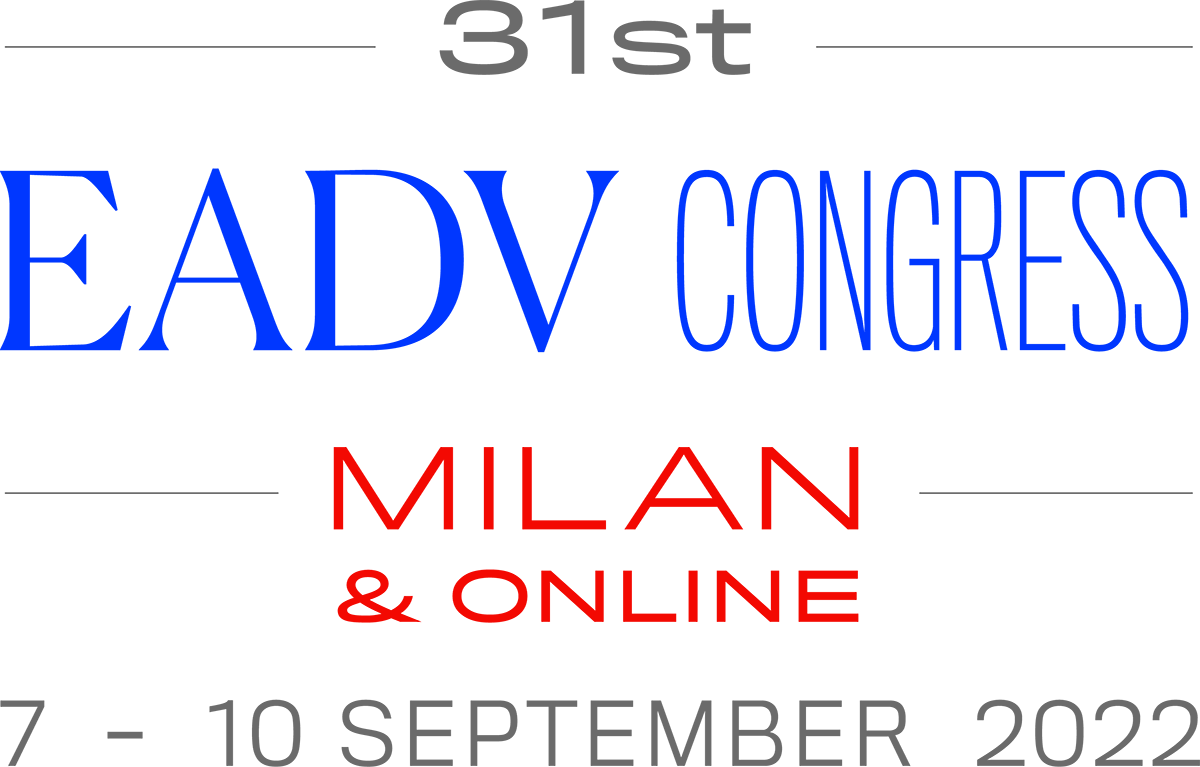Nail Disorders
Nail disorders have always been a key topic in our scientific programmes, and this year is no exception, with several sessions and lectures dedicated to Nail Disorders, touching on aspects such as nutrition, onychosopy, nail psoriasis, onychomycosis, melanoma of the nail and trachyonychia.

Nutrition and nail diseases – Michela Starace (Italy)
Dietary supplements are commonly recommended by dermatologists in the treatment of nail disorders. This presentation of oral over-the-counter supplement use in dermatology summarizes current evidence for the use of zinc, biotin, vitamin D, nicotinamide . Evidence for the safety and efficacy of these supplements is limited, since very few large-scale randomized controlled trials exist for them. The lack of standardized dosing and standardized outcome measures makes comparison across existing studies challenging, and the lack of adverse events reporting in the majority of studies limits analysis of supplement safety. Current evidence is insufficient to recommend the use of biotin or zinc supplements in dermatology. Large-scale randomized controlled trials investigating safety and efficacy are needed before widespread incorporation of these oral supplements into the general practice of dermatology.

Raman spectroscopy in the diagnosis of onychomycosis – Georgios Gaitanis (Greece)
The detection of fungal components in nail fragments, as well as the isolation and identification of the pathogenic fungus, which is almost always a dermatophyte, are the gold standards in the diagnosis of onychomycosis. Due to their sensitivity and ease of application, molecular-based approaches such as PCR detection of pathogenic fungus are also utilised. In general, all these methods detect fungal parts (hyphae and conidia of the pathogenic fungus or DNA) or living organisms (culture).
Raman spectroscopy is an analytical technique which can detect the subtle changes in the chemical composition of nail keratin due to a growing fungus. Previous and ongoing work has shown that subtle alterations in the keratin of the infected nail can be detected in a reproducible manner. Furthermore, recent studies show that the commonest nail pathogen, Trichophyton rubrum, can be safely differentiated from healthy nails with Raman spectroscopy.
This presentation will focus on pertinent new findings, as well as on background knowledge, in order to highlight the present and future of this approach.

Trachyonychia: Evaluation and treatment plans – Matilde Iorizzo (Switzerland)
Trachyonychia is an acquired benign inflammatory disease of the proximal nail matrix producing characteristic nail plate surface abnormalities without pain or other subjective symptoms.
Two clinical varieties that may coexist have been distinguished: opaque trachyonychia and shiny trachyonychia. In opaque trachyonychia the nails are opaque, lusterless and rough; the nail plate surface shows longitudinal ridging due to fine superficial striations distributed in a regular, parallel pattern. In severe cases the nail plate shows superficial scaling. Nail thinning with koilonychia is frequent as well as hyperkeratosis of the cuticles. The aesthetic impairment can be severe.
In the shiny variety of trachyonychia the nail plate shows a myriad of small punctate depressions distributed in a geometric fashion along longitudinal and parallel lines. These pits reflect the light, giving a shiny appearance to the affected nails. In this variety of trachyonychia nail thinning and fragility are not prominent and aesthetic discomfort is mild.
The extent and distribution of nail plate surface abnormalities depends on the severity and course of the inflammatory process. Severe and persistent inflammation produces opaque trachyonychia and a milder and more intermittent inflammation is responsible for the shiny variety.
Trachyonychia primarily affects children, but adults can also be affected without a gender preference. One, a few, several or all nails may be affected.
The condition can be idiopathic or associated with alopecia areata, lichen planus and psoriasis. Even if the diagnosis is clinical, pathology is required to identify the causative disorder. Pathology shows that the disease can be caused by an inflammatory damage to the nail matrix due to spongiotic inflammation (72% of cases), psoriasis (10%) or lichen planus (16%). It is important to note, however, that the clinical association with alopecia areata, lichen planus or psoriasis does not help in establishing the cause of trachyonychia: the nail pathology may in fact show lichen planus or psoriasis in patients with trachyonychia clinically associated with alopecia areata.
The prognosis of trachyonychia is benign, regardless of the responsible disease as it never produces scarring. Treatment is sometimes not necessary, especially in children where spontaneous improvement is described over time. Mild emollients can improve the nail surface in opaque trachyonychia. In more challenging situations, intralesional or topical steroids, oral retinoids and JAK inhibitors baricitinib and tofacitinib are valuable options.
EXPLORE THE FULL PROGRAMME

KEEP IN TOUCH
Stay informed about latest EADV information.
Congresses, Education, JEADV, Membership, Newsletter...
YES, KEEP ME INFORMED
EADV
European Academy
of Dermatology and Venereology
HQ:
Via S. Balestra 22B
6900 Lugano Switzerland
+41 91 973 45 20
congress@eadv.org
Privacy Policy
Copyright 2022 EADV
Terms of Use
Only trust information from our official website: eadv.org
